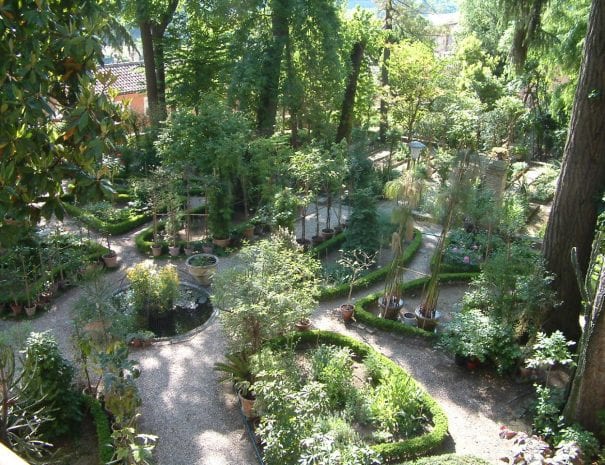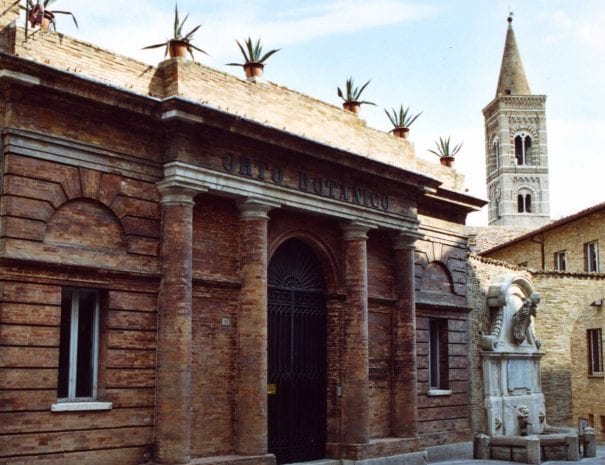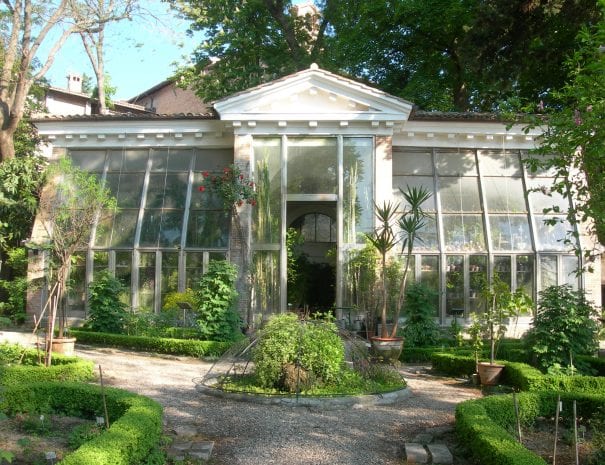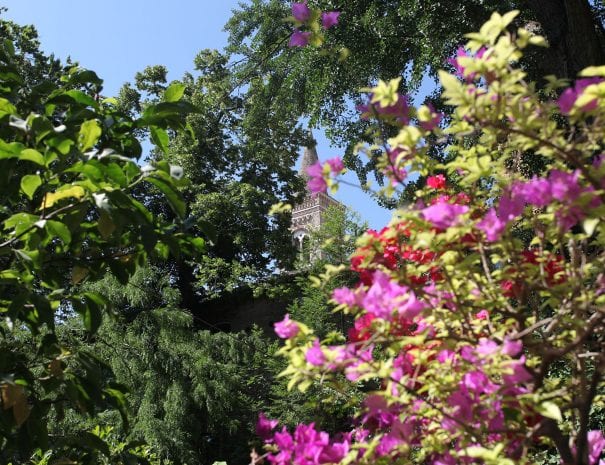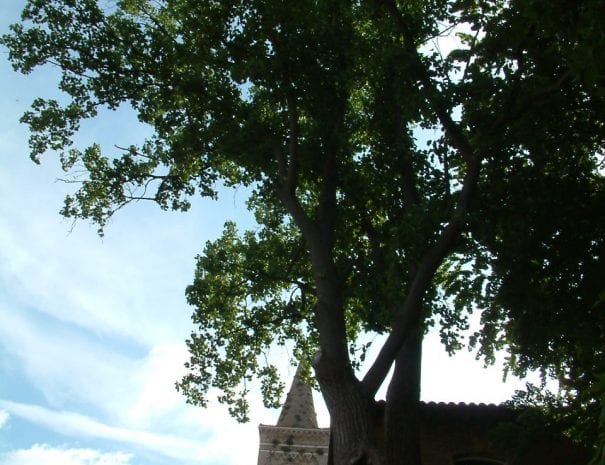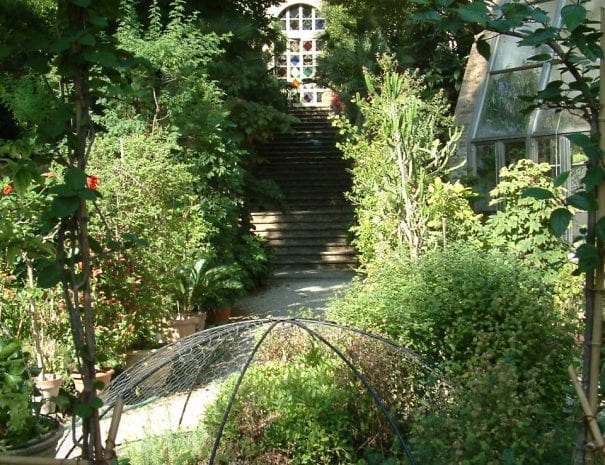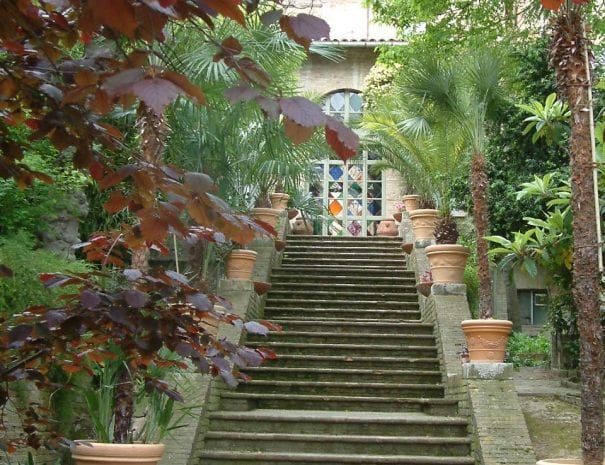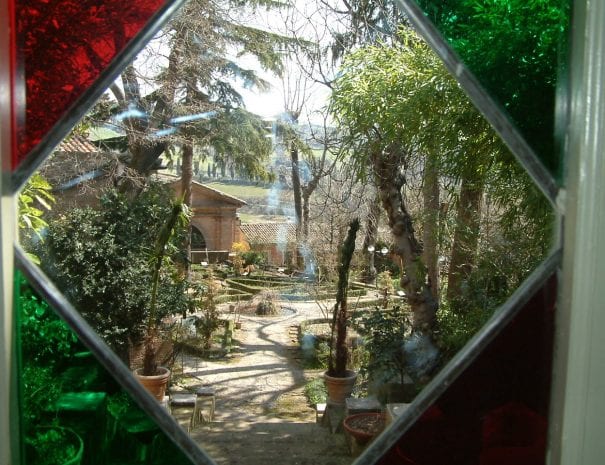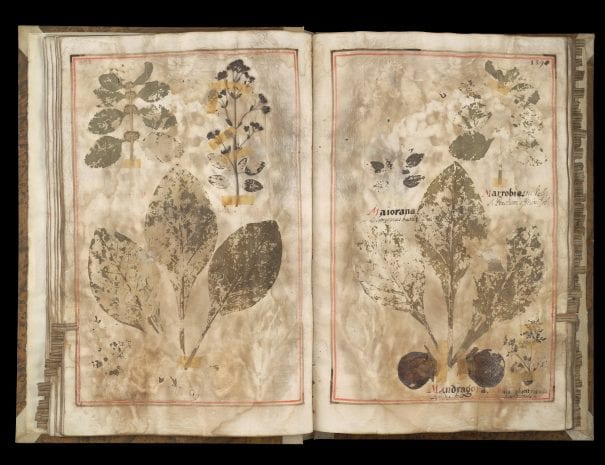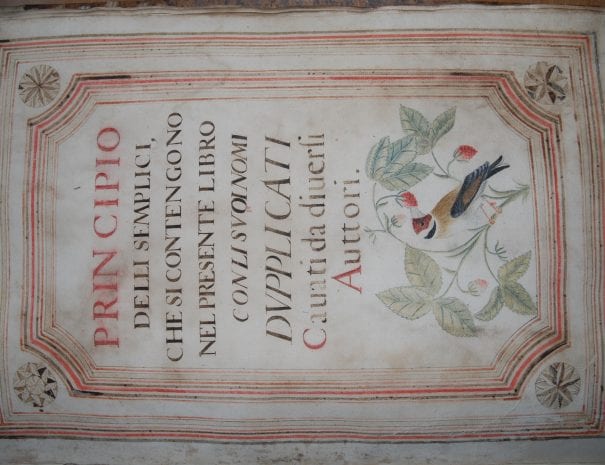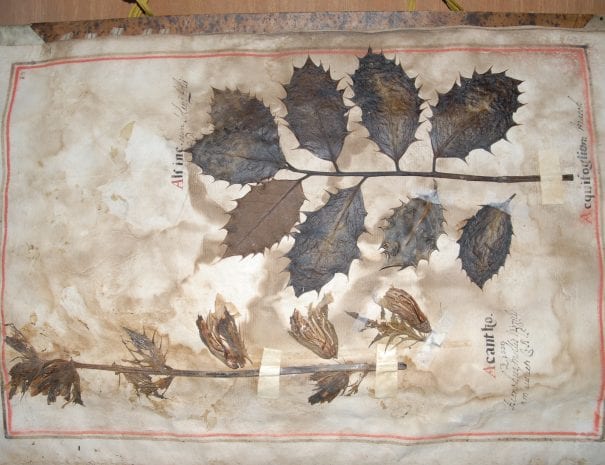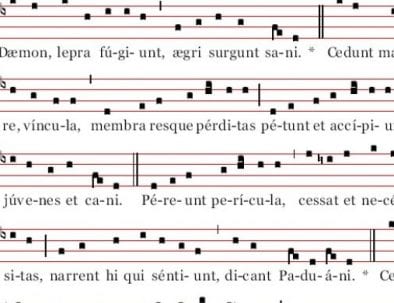
Vegetable gardens, Botanic & Pharmacy Itinerary
Vegetable gardens, Botanic & Pharmacy Itinerary
Itinerary includes
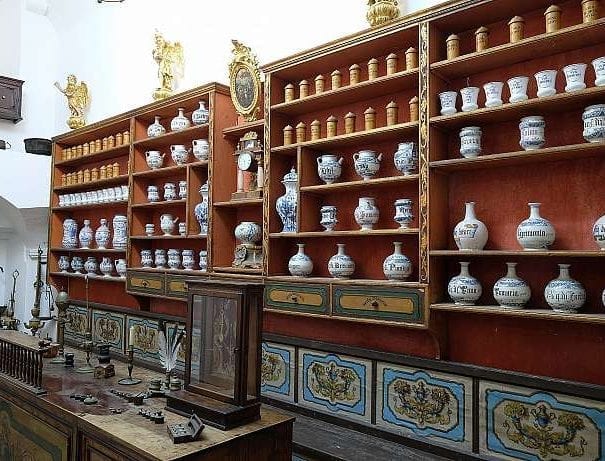
The Pharmacy in Dubrovnik
Croatia
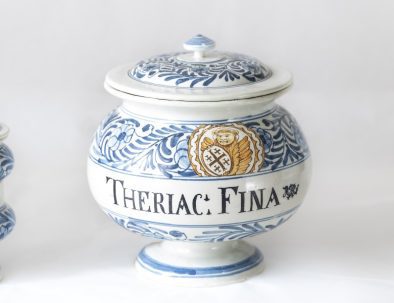
The Pharmacy of St. Saviour in Jerusalem
Israel
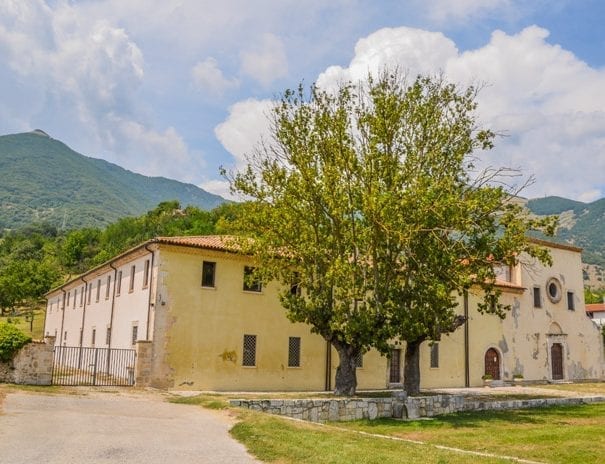
The Garden of the convent of Saint Mary Magdalene
Castel di Sangro - Italy
The Botanical garden of the convent of Urbino
Italy
The Botanical garden of the convent of Urbino
In 1808, following the fall of the Papal Kingdom and the annexation of Urbino to Napoleon’s Italic Kingdom, the University was suppressed and the Royal Boarding High School was established.
In 1809 one of the three gardens of the Friars Minor of the Convent of S. Francesco was confiscated by the authorities and entrusted to Prof. Johannes de Brignoli of Brunhoff, holder of Agricultural and Botanical teachings; he was responsible for the foundation of the Botanical Garden as a scientific institution in support of research and teaching.
Embraced by the walls of the historic center of Urbino, the Botanical Garden is characterized by a splendid historical structure and develops on three terraces.
In the first terrace there is the greenhouse built in 1813 by de Brignoli, the Hortus simplicium, consisting of 13 flowerbeds with boxwood borders, a small greenhouse hosting succulent plants, a collection of insectivore plants and another of aquatic species, A collection of interest is certainly the one represented by dyeing plants, located on the left of the imposing entrance staircase.
The second and third terraces are organized according to taxonomic criteria (Linnean system): in each flowerbed there are several species belonging to the same family. The flowerbeds placed near the building of the Convent of S. Francesco, in a shady and humid position, host the section dedicated to ferns.
Considering the hanging structure of the Botanical Garden, great pride covers the presence of monumental trees, present in particular in the arboretum behind the greenhouse de Brignoli, each of one identifiable by the presence of totems in which botanical characteristics and curiosities are indicated.
In the last 10 years the Botanical Garden of the University of Urbino has opened to the territory and to the users because of the development of projects with public and private institutions, to the continuous and fruitful collaborations with schools of every order and level and to the opening to the public. All this has required a not indifferent commitment that has intensified over time thanks to the gratifications related to the results obtained in the realization of what we believed to be our role: to transmit and share, with appropriate modes of communication and interpretation, science, research and values, such as respect and responsibility, always satisfying the need for beauty, depth and experiences often forgotten or neglected.
The fra Fortunato da Rovigos herbarium
Natural History Museum of Verona - Italy
The fra Fortunato da Rovigos herbarium
Fra Fortunato da Rovigos herbarium is one of the oldest herbaria preserved in the Civic Natural History Museum of Verone. This herbarium, dated 1698, is made of nine big volumes which containe plant samples collected most certainly from all Veneto Region and more, thanks to the letters and samples exchanges that fra Fortunato had with the botanists of the time. From an historic-scientific point of view, this herbarium has a big relevance, because it shows the shift from illustrated herbaria (hortus pictus) to herbaria represented by true dried plants (hortus siccus).
Fortunato (1638-1701) was born in Rovigo, where he made his novitiate with the Capuchin Friars and took vows as lay brother. He then moved to the Friary in Padua as nurses aide and became acquainted with brother Gregorio, naturalist and apothecary, who became his teacher and introduced him to botany. Fra Fortunato started here to fill his herbarium, activity that he took on also after his transfer to the Friars of Bassano, Verone and Venice.
Fra Fortunato da Rovigos herbarium is originally composed of six volumes: his sudden death didnt allow him to complete the work as he had planned. His disciple, brother Petronio da Verona, added two other volumes using the samples already collected by fra Fortunato, and wrote the ninth and last book with an index of the plants included in the herbarium. 2352 plant samples are included in this herbarium, even though several species are redundant. The plant samples are glued directly on the right sheets of the volumes, as commonly in other herbaria of that period, probably using the albumen as glue.
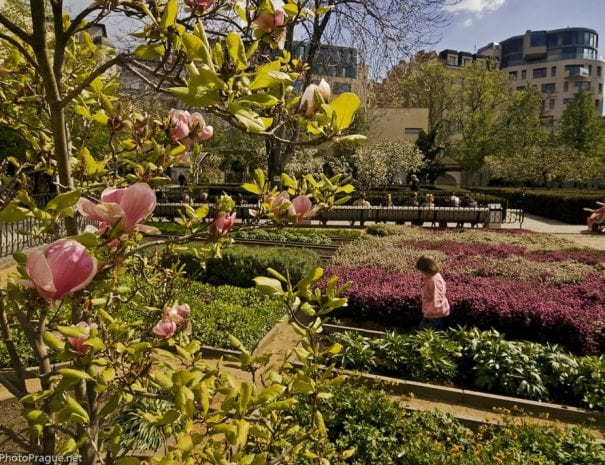
The Franciscans’ Garden in Prague
Czech Republic
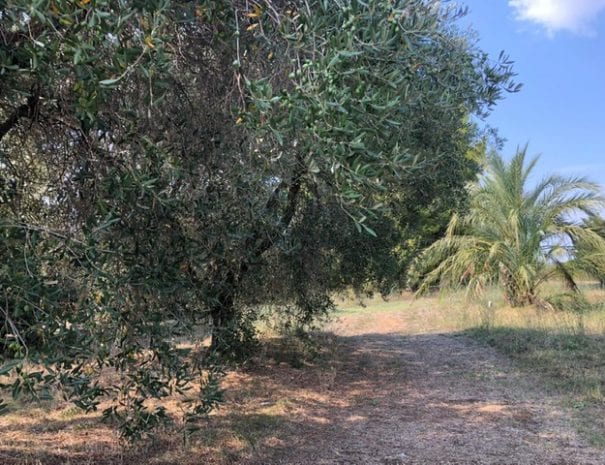
The People’s Garden
Botanical Garden of the University of Torvergata - Italy

The Botanical Garden
University of Viterbo - Italy
Description
The friars’ garden is a real ‘mythical place’ in the popular imagination. The friars obtain fruit and vegetables, herbs, flowers, roots and berries from the garden, which they skilfully convert into creams, herbal teas, digestive liqueurs, or drops and ancient medicines for all kinds of ailments. Centuries of convent life have created an extensive ‘fruit and vegetable’, botanical and medical know-how within the context of an evangelically intense and grateful relationship with Creation.
Indeed, today we would call Francis’ approach an ‘ecological system’. Indeed, he asked the friar who tended the market garden to “leave the boundaries around the garden uncultivated, so that the green of the herbs and the splendor of the flowers may sing how beautiful the Father of all Creation is. He also wants a flowerbed in the garden to be reserved for the fragrant herbs that produce flowers, so that they may remind the beholder of eternal gentleness” (2Cel 165: FF 750). We also learn from Franciscan sources of the story of the cabbages in the garden at Montecasale. St Francis tested the obedience of two young aspirants to the Order by telling them plant the cabbages upside down with the roots pointing upwards. One did as he had suggested, and was received into the Order, while the other did not (Bartholomew of Pisa, De conformitate vitae beati Francisci ad vitam Domini Iesu, fructus XI, pars secunda, in ‘Analecta Franciscana’, Ad Claras Aquas 1906, V, p. 141).
Franciscan monasteries and convents are very busy places where a wide range of activities take place. As well as copying the Holy Scriptures and other texts, the friars welcome pilgrims, other travellers passing through and people in need, and they farm the surrounding land to provide food.
In fact, near the convents you will always find the hortus conclususus, a typical medieval garden but one imbued with a new ‘secular’ sensibility and a renewed vision of nature, the one that emerged from the school of Chartres, Franciscanism and the philosophical-scientific thinking of the Franciscan school in Oxford.
They are usually divided into areas for orchards, ornamental plants and two vegetable gardens, one for edible plants for the canteen and the other for medicinal herbs. The latter, called ‘the garden of the simple’, tended by the infirmarius, the monk in charge of caring for the sick, who also collects the plants that grow wild.
With the passage of time the friars in charge of the cultivation and conservation of medicinal plants have become more and more skilful. In addition to receiving teachings from their predecessors, many dedicate themselves to the study of ancient medical texts and the preparation of natural remedies for a wide range of ailments. The place where the medicinal herbs are kept is equipped with mortars and stills and is transformed into an authentic and increasingly specialized laboratory, the spezieria (apothecary’s shop), which became well-known in the 17th and 18th centuries in almost all Franciscan monasteries and convents.
In the ancient pharmacy, medicinal products are not only prepared for sick friars and pilgrims passing through (a practice that inevitably links the gardens and pharmacies with the pilgrimage route) but also for people living in villages around the monastery. Treatments and preparations are provided free of charge, as ordered by the ecclesiastical authority.
Over the years, the convents’ spezierie grew in size and number, effectively anticipating the model of modern pharmacies.
Some of them are still active today, such as the ancient pharmacy in the historic quarter of Dubrovnik (Croatia), founded in 1317 inside the Franciscan monastery. Initially reserved for the monks, it later opened up to the public, and conserves very valuable books on pharmacology and medicine, medical prescriptions and instruments that date back to the 15th century. It still functions today and continues to make preparations according to ancient recipes.
Itinerary
The Franciscans are also very active in the production of herbaria: one of the most important is that of Friar Fortunato da Rovigo, born in 1638, who personally collected specimens of various species and grew the most common ones in the garden near the convent. His collection has been enriched with precious specimens from missionary friars who send or bring back plants and seeds from all over the world.
Another Franciscan who became famous for his work as a botanist was Charles Plumier, a Franciscan of the Order of the Minims who dedicated his life to the study of plants and flowers. He was sent on several missions by the King of France, and was so successful that he was appointed the court botanist. About 6,000 of Plumier’s drawings survive, 4,000 of them of plants, the others portraying animals, people and landscapes, and all of them are striking for the precision and the lightness of the strokes. Among other things, he was one of the first people to draw plants in their natural environment, inventing, in a sense, the botanical landscape painting.
Another very interesting herbarium is that of the Franciscan Minim Carlo Francesco Berta, born in 1722. A renowned botanist and naturalist, he was Professor of Botany in Ferrara and worked as such until the age of eighty-eight.
One of the best-known spezierie is in the pharmacy of St. Saviour in Jerusalem. A hospice for pilgrims was founded there in 1353 in the convent of the Minims. We only learn more specific evidence about this place in the 15th century, when Father Battista da Lubecca, a doctor, was sent to provide his services in the Holy City. The pharmacy at that time occupied the southern part of the convent; nowadays we can still see some crumbling arches that supported the vault which date back to the era of the Crusades. Next to it were the well-stocked library and a small garden with medicinal plants; an ideal combination, giving the apothecary the herbs he needed for the preparation of remedies very close at hand.
The annals of the Custody record the names of many religious doctors or nurses who worked in the spezieria in Jerusalem. This still provides not only for the needs of the Franciscans, but also for the inhabitants of the city and passing pilgrims, without distinction of faith or nationality.
The success of this pharmacy, called “the most beautiful in the world” in the 18th century, is evident from data recorded in 1895. It seems that the two monks in charge of the apothecary’s shop received as many as 30,404 recipes from 15,200 inhabitants of Jerusalem during that year, although this number is almost certainly lower than the real figure. Its fame and wealth are also evidenced by the presence of numerous working tools and vases and containers for holding the natural preparations.

